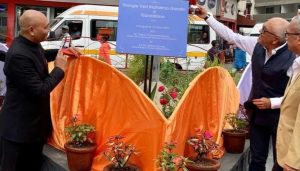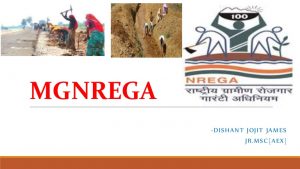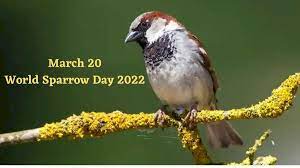Today Current Affairs: 22nd March 2022 for UPSC IAS exams, State PSC exams, SSC CGL, State SSC, RRB, Railways, Banking Exam & IBPS, etc
Table of Contents
What Is The Principle of Reasonable Accommodation?

In the context of hijab controversy, the Karnataka High Court ruled in favour of the State’s circular that required students in educational institutions should only wear prescribed uniforms.
- The decision effectively upheld the denial of entry to students wearing the hijab.
- The court rejected an argument in support of permitting Muslim girls wearing head-scarves that was based on the principle of ‘reasonable accommodation’.
- ‘Reasonable accommodation’ is a principle that promotes equality, enables the grant of positive rights and prevents discrimination based on disability, health condition or personal belief.
- Its use is primarily in the disability rights sector.
- It captures the positive obligation of the State and private parties to provide additional support to persons with disabilities to facilitate their full and effective participation in society.
- For a person with disability, the constitutionally guaranteed fundamental rights to equality (Article 14), the six freedoms (Article 19) and the right to life (Article 21) will ring hollow if they are not given this additional support that helps make these rights real and meaningful for them.
- Article 2 of UN Convention on the Rights of People with Disabilities (UNCRPD): It is necessary and appropriate modification and adjustments not imposing a disproportionate or undue burden to ensure to persons with disabilities the enjoyment or exercise on an equal basis with others of all human rights and fundamental freedoms.
ExoMars 2022 Mission:

The European Space Agency’s ExoMars 2022 mission won’t launch in September, 2022 as planned after the agency suspended all cooperation with Russia’s space program Roscosmos.
- Earlier, the Russian space agency Roscosmos held that it will not cooperate with Germany on joint experiments in the Russian segment of the International Space Station (ISS).
ExoMars 2022 Mission:
It is a two-stage mission:
First Part:
- Its first mission launched atop a Proton-M rocket in 2016 and consisted of the European Trace Gas Orbiter and test lander called Schiaparelli.
- The orbiter was successful while the test lander failed during its descent to Mars.
Second Part:
- It comprises a rover and surface platform:
- This second part of the mission was originally planned for July 2020. But it was postponed until this September due to technical issues.
ESA and National Aeronautics and Space Administration (NASA) were the original ExoMars collaborators, but NASA dropped out in 2012 due to budgeting problems.
- Russia took NASA’s place in the project in 2013.
- The primary aim of the mission is to check if there has ever been life on Mars and also understand the history of water on the planet.
- The European rover will drill to the sub-surface of Mars to collect samples from about 2 m of depth.
- The main goal is to land ESA’s rover at a site which has high-potential for finding well-preserved organic material, particularly from the history of the planet.
Surge In Oil And Natural Gas Prices:

The U.S. announced the banning the import of Russian oil, liquefied natural gas, and coal to the country.
- The move is aimed at depriving Russia of the economic resources needed to continue its war in Ukraine.
- In the run up to the U.S. announcement, international oil prices surged to a 14-year high with Brent crude futures hitting USD139.13 intraday.
- Russia is the world’s third-largest oil producer, trailing only Saudi Arabia and the United States.
- In January 2022, Russia’s total oil production was 11.3 million barrels per day (mb/d), of which 10 mb/d was crude oil, according to the Paris-based intergovernmental International Energy Agency (IEA).
- Russia is the world’s largest exporter of crude and oil products, having shipped 7.8 mb/d in December 2021, and the second largest supplier of crude to the world with only Saudi Arabia exporting more crude than it.
- Russia is also a major exporter of natural gas and supplied almost a third, or 32%, of the gas consumed in Europe (and the U.K.) in 2021.
- The revenue it made from the sales of oil and gas in 2021 accounted for 36% of Russia’s total revenue of 25.29 trillion rubles last year.
Himalayan Griffons : Protection Status

Himalayan Griffons died of suspected poisoning in Assam
- The Himalayan Griffon Vulture, Gyps himalayensis, is an Old World vulture in the family Accipitridae, which also includes eagles, kites, buzzards and hawks.
- It is closely related to the European Griffon Vulture, G. fulvus.
- This vulture is a typical vulture, with a bald white head, very broad wings, and short tail feathers.
- It has a white neck ruff and yellow bill and the whitish body and wing coverts contrast with the dark flight feathers.
Protection Status:
- IUCN Red List: Near Threatened (NT)
- The Himalayan vulture mostly lives in the Himalayas on the Tibetan plateau (India, Nepal and Bhutan, central China and Mongolia).
- It is also found in the Central Asian mountains (from Kazakhstan and Afghanistan in the west to western China and Mongolia in the east).
- Occasionally it migrates to northern India but migration usually only occurs altitudinally.
Translation Of India’s Constitution Into Ol Chiki Script:

India’s Constitution has been translated into Ol Chiki script for the first time.
- The Ol Chiki script, also known as Ol Chemetʼ, Ol Ciki, Ol, and sometimes as the Santali alphabet, is the official writing system for Santhali, an Austroasiatic language recognized as an official regional language in India.
- The Constitution of India has special provisions for the development of the Scheduled Castes and the Scheduled Tribes, and the translation has been useful in providing a deeper understanding of laws, powers and the community’s fundamental rights for readers like Hembram. (Hembram is a surname which is commonly used among the Santhal tribals).
- Adivasi scholars often point to Article 21 under Schedules V and VI of the Constitution that set out the rights of tribal peoples to development in ways that affirm their autonomy and dignity, and are considered by many to be the foundation of Adivasi rights.
- 5th Schedule: It deals with the administration and control of Scheduled Areas as well as of Scheduled Tribes residing in any State other than the States of Assam, Meghalaya, Tripura and Mizoram.
- 6th Schedule: It provides for the administration of tribal areas in Assam, Meghalaya, Tripura and Mizoram to safeguard the rights of the tribal population in these states. This special provision is provided under Article 244(2) and Article 275(1) of the Constitution.
Mahatma Gandhi Green Triangle:

Mahatma Gandhi Green Triangle’ has been unveiled in Madagascar to mark Azadi ka Amrit Mahotsav.
- The word green in the plaque (a flat piece of stone or metal) signifies their commitment to sustainable development and saving the environment.
- The naming of this park as Mahatma Gandhi Green Triangle is a tribute to Mahatma Gandhi.
- Gandhi was a ‘Pravasi’ who returned to India from South Africa, led India’s freedom struggle.
- Madagascar has a large diaspora from the Indian state of Gujarat and it is fitting that a green triangle named after Gandhi, who hailed from Porbandar in the state, is being unveiled in the capital of Madagascar (Antananarivo).
- Madagascar voiced appreciation for efforts by the Indian Embassy in greening the area, saying it meets the objective of the Urban Municipality of Antananarivo to create the maximum green space in the capital city of Madagascar.
Report On The Functioning Of The MGNREGA To The Lok Sabha:

The Parliamentary Standing Committee on Rural Development and Panchayati Raj has submitted its report on the functioning of the MGNREGA to the Lok Sabha.
Concerns highlighted:
- There has always been a hike in the revised estimate over the budget estimate in the past.
- Delay in the release of funds.
- Wide disparity in the wage rate between one state to another.
- Fake job cards, widespread corruption and late uploading of muster rolls.
- Recommendations made:
- Increasing the number of guaranteed working days from 100 to at least 150.
- Increase the permissible work taking into account the local geographical terrain and local requirements.
- The government should relook at its calculation and suitably approach the ministry of finance for higher allocation of funds in order to speed up the pace of rural development schemes for dearth of budget.
- As per the latest economic survey Demand for work under MGNREGA scheme has dropped from the peak of the first lockdown, but is still higher than pre-COVID levels.
- The highest demand for work under the scheme was seen in States which are usually the destination of migrant workers, rather than source States.
About MGNREGA:
- The scheme was introduced in 2005 as a social measure that guarantees “the right to work”.
- The key tenet of this social measure and labour law is that the local government will have to legally provide at least 100 days of wage employment in rural India to enhance their quality of life.
- Key objectives:
- Generation of paid rural employment of not less than 100 days for each worker who volunteers for unskilled labour.
- Proactively ensuring social inclusion by strengthening the livelihood base of rural poor.
- Creation of durable assets in rural areas such as wells, ponds, roads and canals.
- Reduce urban migration from rural areas.
- Create rural infrastructure by using untapped rural labour.
Cheetah Reintroduction Project: Key Points

The cheetah, which became extinct in India after Independence, is all set to return with the Union Government launching an action plan.
- Under the ‘Action Plan for Introduction of Cheetah in India’, 50 of these big cats will be introduced in the next five years.
- The action plan was launched at the 19th meeting of the National Tiger Conservation Authority (NTCA).
- ‘Reintroduction’ of a species means releasing it in an area where it is capable of surviving.
- Reintroductions of large carnivores have increasingly been recognised as a strategy to conserve threatened species and restore ecosystem functions.
- The cheetah is the only large carnivore that has been extirpated, mainly by over-hunting in India in historical times.
- India now has the economic ability to consider restoring its lost natural heritage for ethical as well as ecological reasons.
- The cheetah, Acinonyx jubatus, is one of the oldest of the big cat species, with ancestors that can be traced back more than five million years to the Miocene era.
- The cheetah is also the world’s fastest land mammal.
- African Cheetah is listed as vulnerable in IUCN red listed species.
- The country’s last spotted feline died in Chhattisgarh in 1947. Later, the cheetah — which is the fastest land animal — was declared extinct in India in 1952.
- The Asiatic cheetah is classified as a “critically endangered” species by the IUCN Red List, and is believed to survive only in Iran.
Cheetah reintroduction programme in India:
- The Wildlife Institute of India at Dehradun had prepared a ₹260-crore cheetah re-introduction project seven years ago.
- India has plans to reintroduce cheetahs at the Kuno National Park in Sheopur and Morena districts of Madhya Pradesh’s Gwalior-Chambal region.
- This could be the world’s first inter-continental cheetah translocation project.
FAME India Scheme:

Under FAME-India Scheme, incentives are provided to buyers of electric vehicles in the form of an upfront reduction in the purchase price of electric vehicles.
- As per the information received from Department of Revenue, at present the GST rate on electric vehicles is 5%.
- The GST rates are prescribed based on the recommendations of the GST Council.
- Electric vehicles are already at the lowest rate slab of 5%.
- The Government on 12th May, 2021 approved a Production Linked Incentive (PLI) scheme for manufacturing of Advanced Chemistry Cell (ACC) in the country in order to bring down prices of battery in the country.
- Drop in battery price will result in cost reduction of electric vehicles.
- GST on electric vehicles has been reduced from 12% to 5%; GST on chargers/ charging stations for electric vehicles has been reduced from 18% to 5%.
- Ministry of Road Transport & Highways (MoRTH) announced that battery-operated vehicles will be given green license plates and be exempted from permit requirements.
- MoRTH issued a notification advising states to waive road tax on EVs, which in turn will help reduce the initial cost of EVs.
About FAME India scheme:
- FAME-India Scheme is implementing by Department of Heavy Industry in order to promote manufacturing of electric and hybrid vehicle technology and to ensure sustainable growth of the same.
- FAME India is a part of the National Electric Mobility Mission Plan.
- Main thrust of FAME is to encourage electric vehicles by providing subsidies.
- FAME-India Scheme proposes to give a push to electric vehicles (EVs) in public transport and seeks to encourage adoption of EVs by way of market creation and demand aggregation.
- It is being implemented in two phases:
- Phase-I [Faster Adoption and Manufacturing of (Hybrid) & Electric Vehicles in India] from 1st April 2015.
- The Phase-II of the Faster Adoption and Manufacturing of (Hybrid) & Electric Vehicles.
World Sparrow Day:

Every year March 20 is observed as World Sparrow Day to raise awareness about the bird.
- The first World Sparrow Day was celebrated in 2010 in different parts of the world.
- The theme for this year is “Monitor the Sparrows & other common birds”.
- World Sparrow Day is an initiative of the Nature Forever Society, which is a non-government organisation (NGO) run by Mohammed Dilawar, who’s an internationally acclaimed conservationist.
- Sparrow is a very social bird and is gregarious at all seasons when feeding, often forming flocks with other types of bird.
- House sparrows are becoming extinct everywhere, including in India.
- Experts say there’s a need to spread awareness on their conservation.
Vedanthangal Bird Sanctuary : Tamil Nadu

The Environment Ministry’s Expert Appraisal Committee has recommended grant of environment clearance for Sun Pharmaceuticals Industries Ltd.’s expansion project in Tamil Nadu’s Madurantakam taluk, around 3.7 km from the Vedanthangal Bird Sanctuary.
- Vedanthangal Bird Sanctuary is a 74-acre protected area located in the Madurantakam taluk of the Chengalpattu District in the state of Tamil Nadu.
- Vedanthangal is home to migratory birds such as pintail, garganey, grey wagtail, blue-winged teal, common sandpiper and the like.
- Vedanthangal is the oldest water bird sanctuary in the country.
- Vedanthangal in Tamil language means ‘hamlet of the hunter’.
Africa’s Boma Capturing Technique:

An uncommon experiment with Africa’s Boma technique undertaken at Keoladeo National Park in Rajasthan’s Bharatpur district for capturing and translocating spotted deer is set to improve the prey base in Mukundara Hills Tiger Reserve, situated 450 km away.
- The move will lead to herbivores populating the forests ahead of the proposed shifting of two tigers to Mukundara.
- The Boma capturing technique, which is popular in Africa, involves luring of animals into an enclosure by chasing them through a funnel-like fencing.
- The funnel tapers into an animal selection-cum-loading chute, supported with grass mats and green net to make it opaque for animals, which are then herded into a large vehicle for transport to another location.
- This old technique was earlier utilised to capture wild elephants for training and service.
- Following its adoption in Madhya Pradesh in recent years, Boma has been put to practice for the first time in Rajasthan for sending the ungulates to the prey-deficient Mukundara reserve as the kills for tigers and leopards.
- The National Tiger Conservation Authority’s (NTCA) technical committee has approved a proposal to shift two tigers from Ranthambhore National Park to Mukundara, which lost two tigers and two cubs in 2020 and is now left with an eight-year-old tigress.
- The reserve, spread across 759 sq. km area, was created with the portions of Darrah, Chambal and Jawahar Sagar wildlife sanctuaries in south-eastern Rajasthan.




